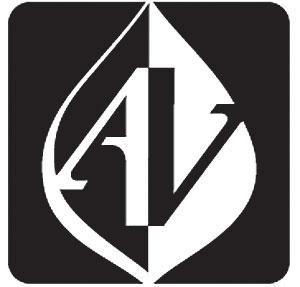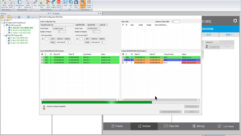

Inside InfoComm’s Green AV Rating System
Having struck out with the U.S. Green Building Council, the AV industry now aims to create its own LEED-type sustainability certification process, due out in January 2011. Here’s what it entails.
If you attended the AV Sustainability Task Force meeting at InfoComm 2010, you’re either really plugged in or you were flying partially blind. That’s because the association didn’t announce the meeting, or the development of its new Sustainable Technology Environments Performance (STEP) system, until a week before. Still, the initiative was deemed important for a June 11 soft-launch of a preliminary STEP draft, led by the task force’s chairman, Scott Walker of Waveguide Consulting. “After two years of attempts and face-to-face meetings with the U.S. Green Building Council, we decided that we were not a priority to them and would probably spend a couple more years on the sidelines, unrecognized entirely by the LEED rating system,” Walker, who is CTS-D and LEED AP certified, told Pro AV after InfoComm. “So it was best to take matters into our own hands.”
What is STEP? For starters, it’s not a standard, which would require ANSI/ISO accreditation. Attainable STEP credits are based on best practices and divided into five phases that correspond to the professionals responsible for each: Program, Architectural and Infrastructure Design, System Design, Systems Integration, and Operations. These credits address areas where energy can be reduced and address opportunities for recycling and reusing equipment, reducing travel, and other activites deemed sustainable. For example:
• Many Program phase responsibilities fall on the consultant to establish a paperless process, provide five-year estimates for energy use and costs, and identify end-of-life options for new and existing equipment.
• During Architectural and Infrastructure Design, consultants are encouraged to specify products that meet green standards such as Greenguard, Energy Star, or other international standards.
• During Systems Integration, installers and programmers set up systems to adhere to InfoComm’s upcoming ANSI Energy Management Standard, enable all power management settings, and coordinate with building management systems.
• In the Operations phase, a technology manager would employ a “video-first” travel policy for remote meetings, measure and report savings from conference technologies, and reduce paper use.
STEP will be a voluntary program, so project owners and technology managers will be its driving force. “It really needs to begin and end with the owner. I don’t think consultants or integrators would want to go through the STEP process without the owner’s buy-in,” Walker says. At the end of each phase, an InfoComm representative would confirm that qualifications have been met. The idea is to approve “as you go,” Walker says, rather than wait until the end of a multiyear project.
Next Steps
STEP version 1.0 is scheduled for release in January 2011. In the meantime, Walker and InfoComm are accepting feedback before the task force’s next meeting in the fall. One part of the program that has yet to be developed is the grading system. The task force is deliberating whether to follow LEED’s example with a Platinum-Gold-Silver scale or to go with STEP 1, STEP 2, and STEP 3.
One award under consideration may not be granted until a year after a project is finished. “The secondary award would be done after a year of operation to make sure the system meets what the designer, integrator, and programmer actually delivered on opening day,” Walker says. And while he hopes to find a way to measure operations, something he believes the LEED system lacks, Walker admits, “Generally, people don’t want to wait a year to prove that they’ve done their work.”
As the task force works on STEP, Randy Lemke, InfoComm’s executive director and CEO, is thinking behind the scenes. “It’s really two things. First is working with partner groups and other associations that might want to participate with us. Second is the development of databases, websites, forms, and procedures,” he says. “You usually do all that stuff in advance, but we really needed the input of a lot of people.”
Lemke says he plans to enlist several endorsing associations, some of which have already shown interest, because STEP will be designed to apply to other systems as well, such as security and building management. Then there’s the matter of educating customers and creating demand. “The primary way to reach project owners is through their vendors, the people who are designing and installing the system, and encouraging them to go through this process,” Lemke says.
After the InfoComm presentation, Walker says a major university with a large project in the works volunteered to beta-test STEP during its development. The EPA has also reportedly shown interest. Eventually, the hope is that the USGBC will finally give green AV its due.










